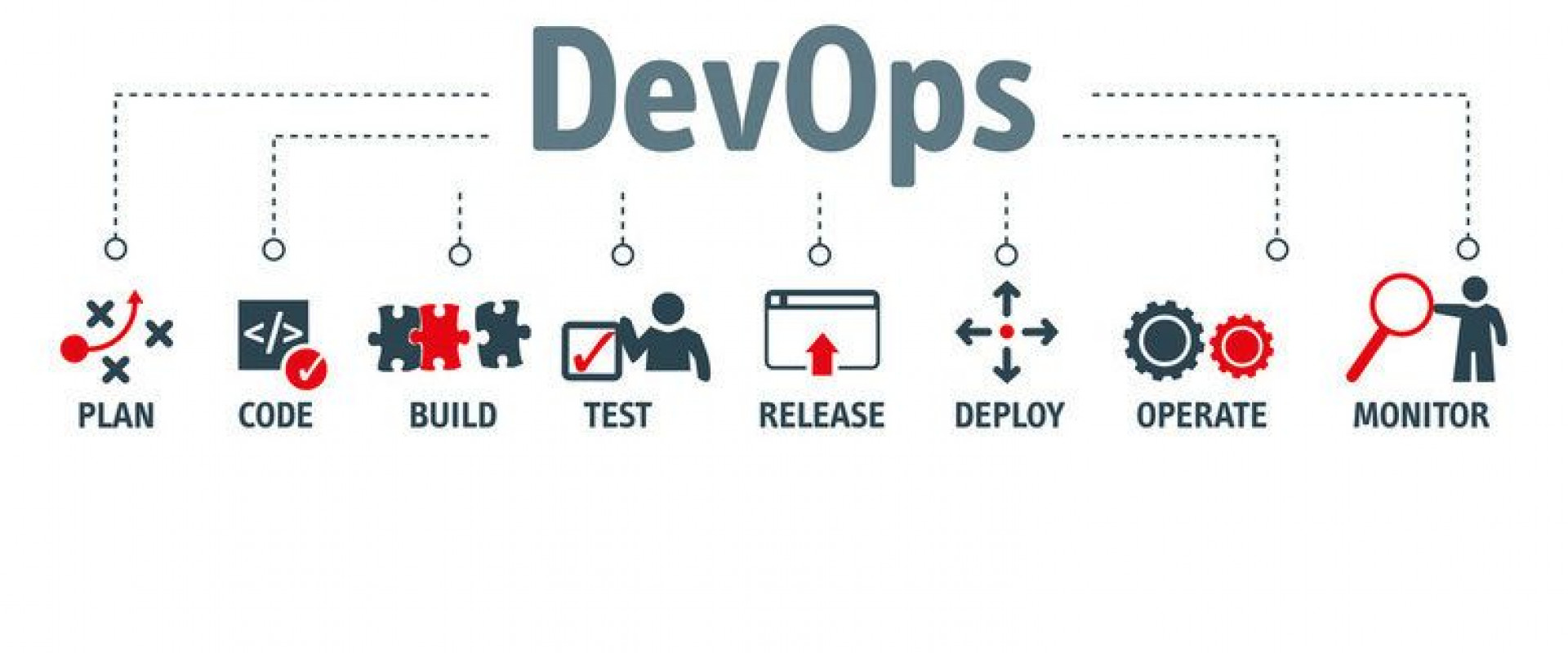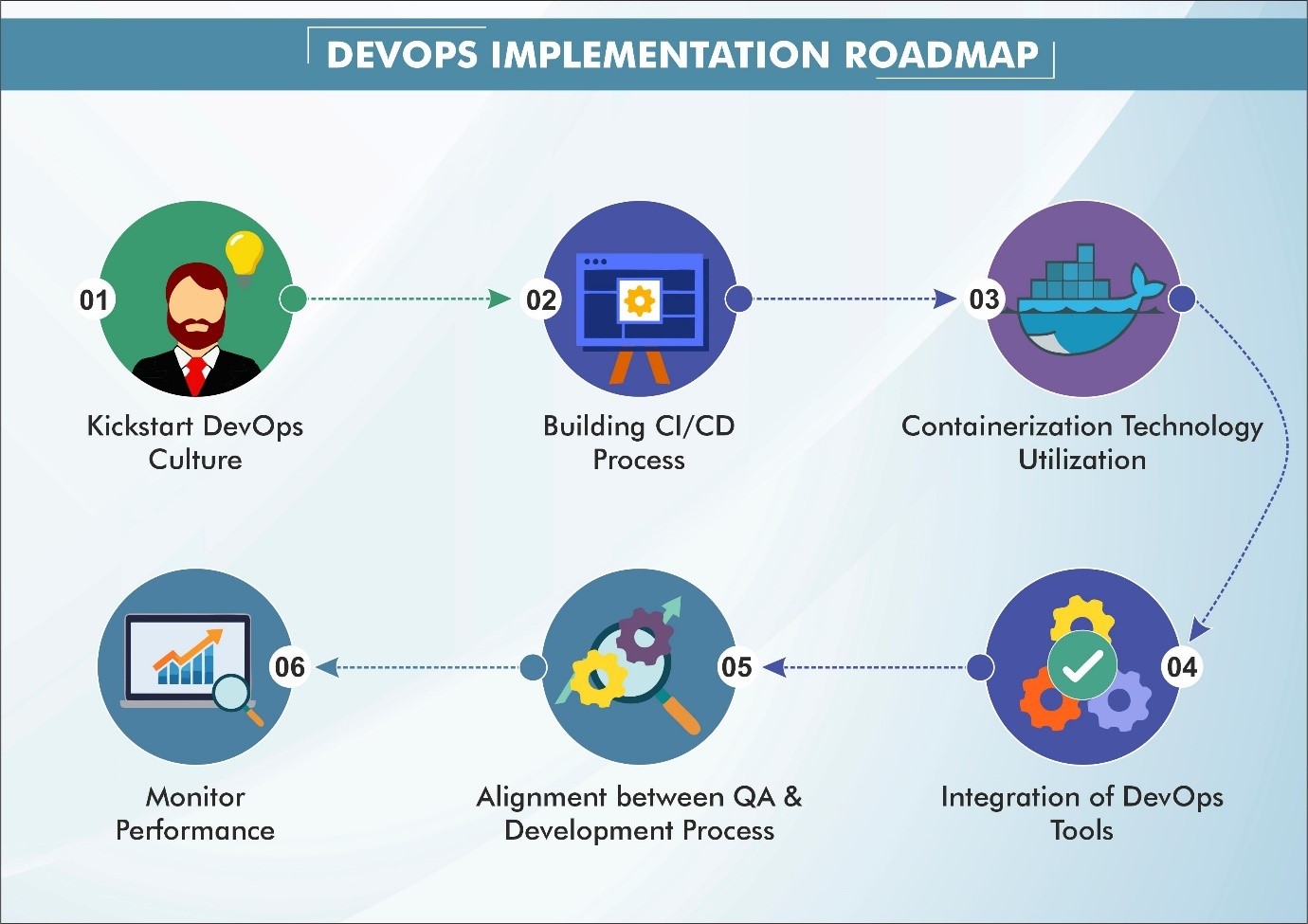DevOps for Enterprise - Are You Doing It Right?

To help you get started, we have mentioned a roadmap to DevOps implementation along with the key steps to implementing DevOps in the right way.
The development of a product or application is a lengthy process and involves various steps that need thorough checking at several stages. An enterprise needs a system that can help them manage this development process and make it faster and more efficient.
DevOps is the process implemented in large-scale organizations that help them in achieving higher productivity, operational efficiency, optimized results, etc. It is a set of tools, approaches, and practices that allows the combination of the developmental and operational capabilities for rapid product development.
Why DevOps Is Considered Important for Enterprise?
The standard DevOps solutions help the organization in focusing on the creation of the automated continuous integration and continuous deployment (CI/CD) pipeline. It analyzes the requirements essential for the atomization of each task involved. DevOps for the enterprise or Enterprise DevOps looks at large-scale things to promote availability and reliability.
The other aspect in which standard DevOps differs from Enterprise DevOps is that it has an emphasis on the security aspect. It follows the standard practices for DevSecOps. The implementation of Enterprise DevOps helps the organization comply with the standards essential for promoting the security and privacy of private information.
A fully equipped team equipped with perfect training will be successful in handling DevOps. Enterprises that look to scale their business operations and functions need to follow the best DevOps practices along with the right tool kit. The ability of the team members to embrace the CI/CD along with consistent tweaking processes will be able to achieve the goals and objectives of the enterprises.

DevOps - Best Practices to Follow for Enterprise Implementation
The best practices to follow for the implementation of DevOps for the enterprise include:
1. Continuous integration:
This continuous integration enables the developers to completely merge the code changes and update codebases into the shred and the master repositories. This helps in the automated running of the application that can access the various bugs and errors. The developers can identify and solve these bugs and errors to enhance the software quality.
This will lead to minimizing the time required for the seamless release of the next version of the software. The tools used involve Jenkins, Gitlab, Bamboo, etc.
2. Continuous deployment and delivery:
This continuous process allows the developers to automate the entire process starting from the code commits to the entire process of production. It also automates the process between the development and the delivery stages. The code gets automatically updated after passing the different test cases in equality assurance environments.
It provides updates on the improvements made to the application. The most popular tools used for deployment include the AWS Code Deploy, and for the delivery include Buddy, Circle CI, TeamCity, etc.
3. Continuous testing:
Testing is one of the crucial steps involved in the software development lifecycle process. This continuous testing procedure allows for the identification of various flaws or errors. Timely resolving these issues at the earlier stages before software reaches production will lead to saving time, money, and effort. The reliable tools used for continuous testing include Selenium, Applause, Blaze meter, etc.
4. Continuous monitoring:
This helps in keeping track of the process of every development and the various operations related to the lifecycle phase. This ensures that the product has improved performance, reliability, and efficiency as it moves from development to the final stage. The tools used include AWS cloud watch, Dynatrace, and Akamai mPulse.
Implementing DevOps for Enterprise
There are several ways of implementing DevOps for the enterprise effectively, and it includes:
Use current working base: This includes building the capabilities on the current layer of the working base available. This is possible by implementing the use of certain toolchains that can help in supporting the transition from a waterfall model to an agile development model. Enterprise DevOps allows for recognizing the value of building using existing assets.
Do not overload the operational process: The demands are always high, and the enterprise has to work across time to meet these increasing demands at the set deadlines. The operational load can be reduced by automating the process, removing constraints, etc. Increasing real-time visibility leads to a decrease in the pressure on the operational process.
Improve business confidence: Enterprise DevOps helps in increasing the security, performance, and compliance that is required to be on the competitive edge. It also provides the speed and quality for making the transition into a culture to incorporate security into every endeavor.
Always deliver desirable results: DevOps helps in understanding the needs of the customers like the constraints, challenges, priorities, issues, etc. considering all these, they help in developing the product that meets the needs of their customers at a faster pace.
Implement automation: One of the most important benefits of DevOps is its process automation. DevOps makes use of tools like Chef and Jenkins for the automation of the CI/CD pipeline. This helps in the fastening of the process. Automation at various stages ensures that the quality of the product is maintained while making the process faster and secure.
Having a holistic approach: Implementing the DevOps solutions helps in having a continuous process for all the tasks that include operations, planning, integration, testing, monitoring, delivery, and feedback. It also allows for providing a holistic view across the different functions during product development.
Making teams focus on a single set of tasks: The DevOps-oriented approach makes use of the ChatOps framework that allows for open communication between the different teams in the organization. Using this they can even share documents securely. This ensures all the teams have improved communication and allows them to focus on a single set of tasks.
Quick feedback: DevOps allows for getting various types of feedback using a specific code. This can be from testing units, integrations, personal feedback from customers, etc.
Ensure a long-term commitment: The implementation of the DevOps practices ensures that it makes all the significant changes in the organization's development structure that are important for making the significant improvement in the results.
Improving the innovation process: The use of DevOps helps the organization in overcoming the organizational silos and improves the communication between the different teams. It also incorporates automation at various stages, thus leading to saving time, money, and efforts that can be used effectively in the innovation process.
Let The Transformation Process Be All-Inclusive: Implementing the DevOps solutions focuses on various aspects like the people, process, operations, tools, etc., instead of making isolated implementations. This leads to the overall success of product development.
Implementing DevOps methodologies is a significant undertaking that requires making extensive changes to an organization’s development structure. Executed correctly, however, the benefits of embracing this new way of performing version delivery are impossible to deny and result in significantly improved delivery of updated software to end-users.
We Provide consulting, implementation, and management services on DevOps, DevSecOps, Cloud, Automated Ops, Microservices, Infrastructure, and Security
Services offered by us: https://www.zippyops.com/services
Our Products: https://www.zippyops.com/products
Our Solutions: https://www.zippyops.com/solutions
For Demo, videos check out YouTube Playlist: https://www.youtube.com/watch?v=4FYvPooN_Tg&list=PLCJ3JpanNyCfXlHahZhYgJH9-rV6ouPro
If this seems interesting, please email us at [email protected] for a
call.
Relevant blogs:
Testing Your Infrastructure as Code Using Terratest
To Shift Right, You Need Observability
Recent Comments
No comments
Leave a Comment
We will be happy to hear what you think about this post